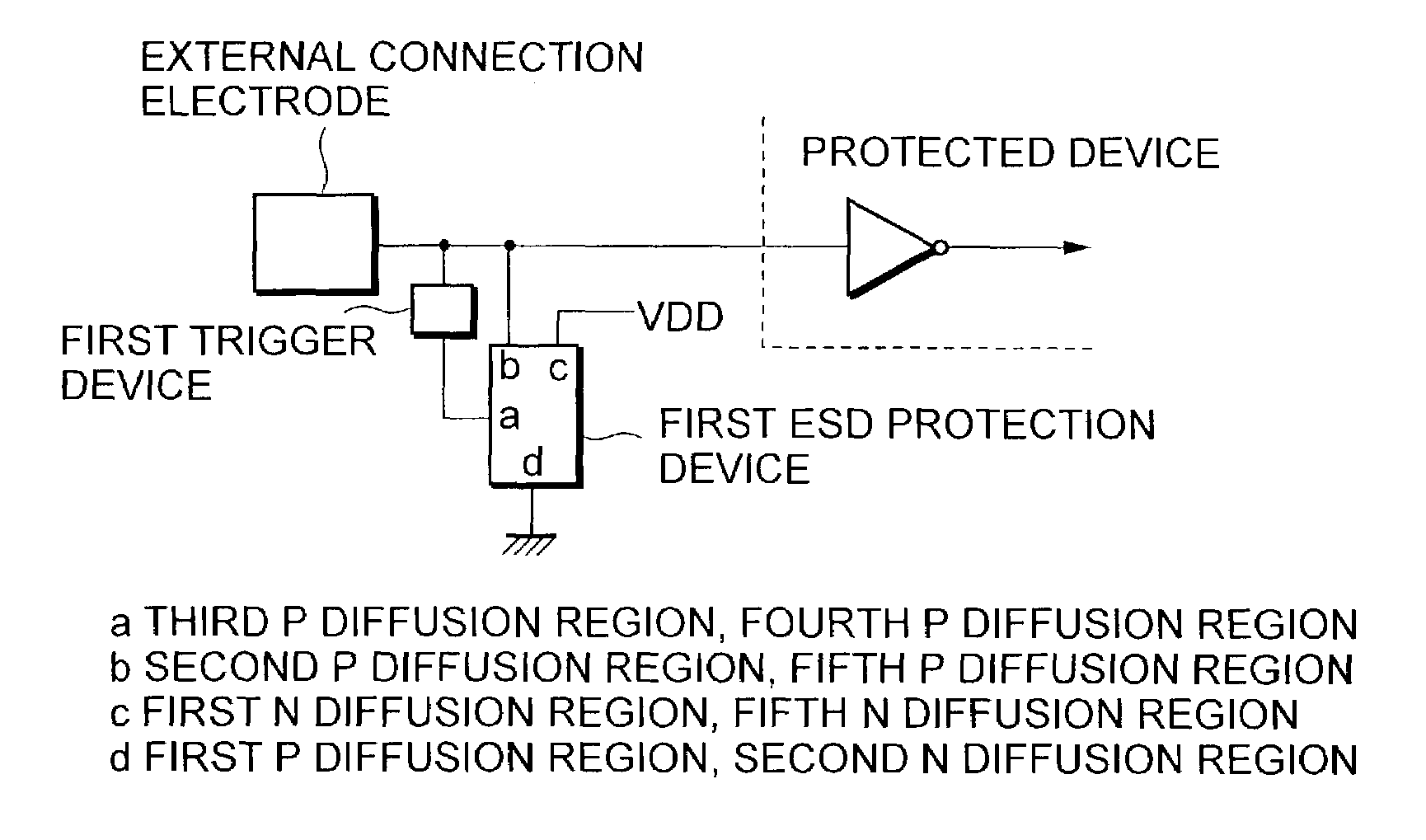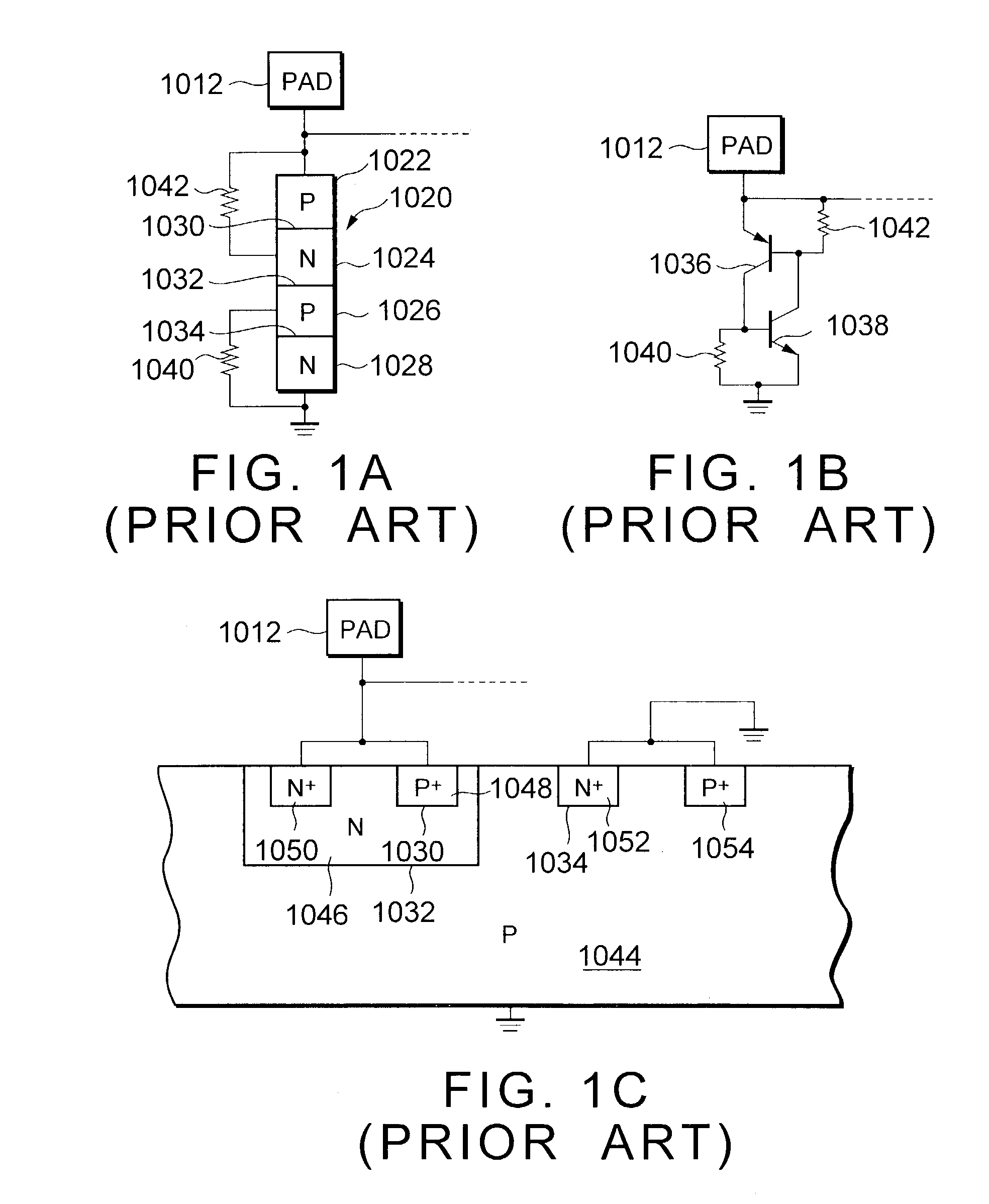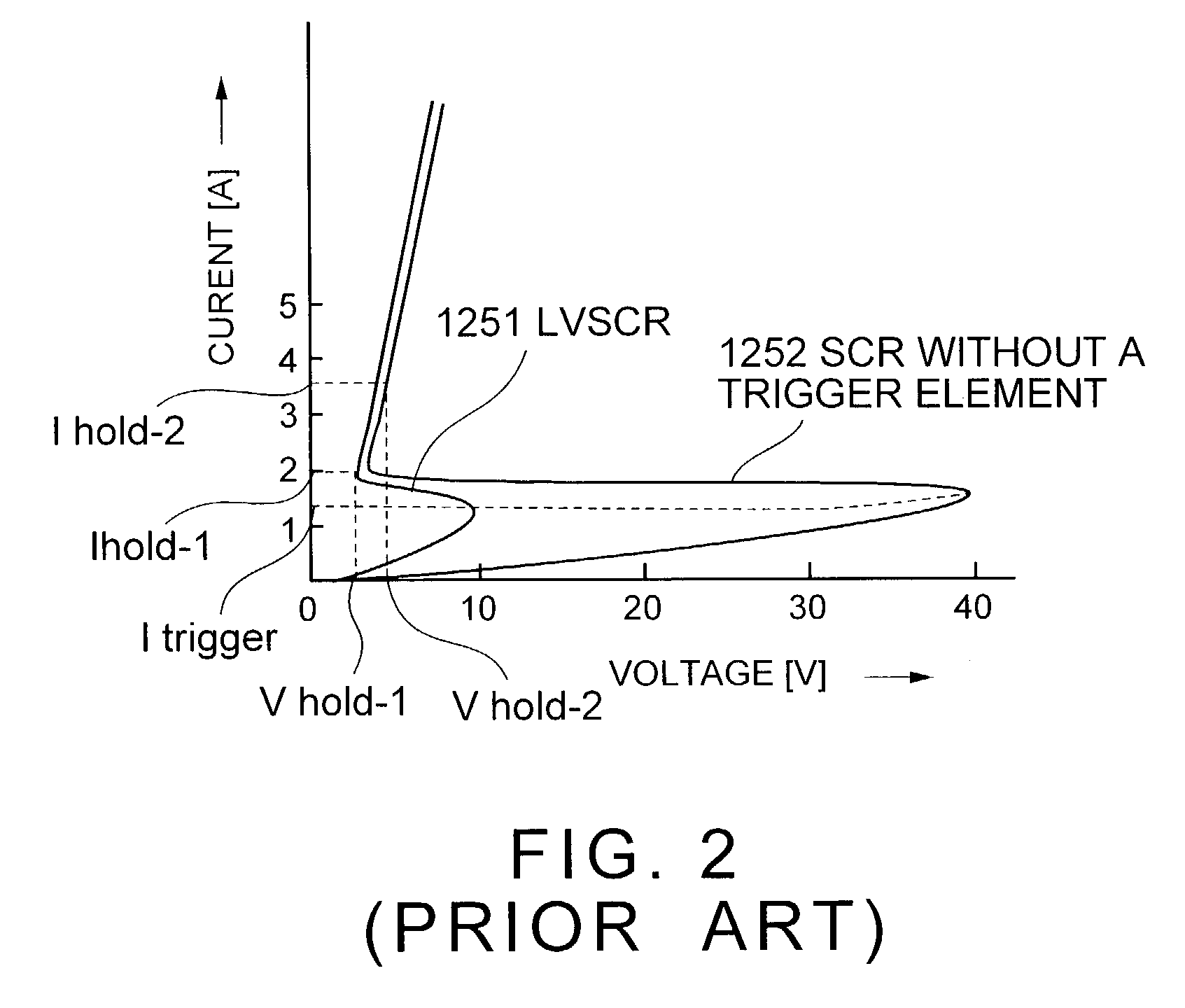Electrostatic discharge protection device
a protection device and electrostatic discharge technology, applied in the direction of emergency protection circuit arrangement, etc., can solve the problems of high density, easy breakage of lsi, complicated function of lsi, etc., and achieve low resistance for circuit devices
- Summary
- Abstract
- Description
- Claims
- Application Information
AI Technical Summary
Benefits of technology
Problems solved by technology
Method used
Image
Examples
first embodiment
[0212]FIG. 4 depicts a schematic plan view showing a planner outer configuration of the ESD protection device of the present invention. FIG. 5A depicts a sectional view schematically showing a cross section taken on line A1—A1 of FIG. 4, FIG. 5B depicts a sectional view schematically showing a cross section taken on line A2—A2 of FIG. 4. FIG. 5C depicts a view additionally drawing an equivalent transistor and resistor devices to FIG. 5A for explaining an operation of the ESD protection device. Further, in the sectional views FIGS. 5A to 5C, for avoiding complexity and for easy understanding, contact holes being not an essential constitution element of the present invention will be omitted in the drawing. Further, in a description below a conductive type of such as well, well region, or diffusion region of the same reference designation will be a similar conductive type.
[0213]Referening, now, to FIG. 4 and FIGS. 5A to 5C, an ESD protection device 1 of the present embodiment is formed...
seventh embodiment
[0306]A protecting operation when surge current is applied to the external connection electrode not shown connected thereto the ESD protection device 9 of the present embodiment via the first trigger device 15, fundamentally, similar to a case of the ESD protection device 7 of the seventh embodiment, therefore detailed explanation will be omitted. Meanwhile, in the ESD protection device 9 of the present embodiment, the first N diffusion region 221 and the second P diffusion region 123 are arranged such that respective boundaries opposing to each other constitute irregularity shapes and being brought in mesh with each other, therefore, an impedance of current passage at the time of protective operation that is SCR operation can be further lowered or on condition of the same impedance value, an area of the ESD protection device can be further decreased.
[0307]Next, a ninth embodiment of an ESD protection device of the present invention will be explained. FIG. 14A is a view for explaini...
tenth embodiment
[0347]Now, a first modified example of an ESD protection device of the present invention improve above-mentioned problems. Referring FIG. 22, a first modified example is explained as following.
[0348]As shown in FIG. 22, a first modified example of a tenth embodiment of an ESD protection device of the present invention comprises a first P well region 2101, second P diffusion regions 2123 (an anode electrode), a third P diffusion region 2125 (a trigger tap electrode), N conductive type third N wells 2201 peripheries thereof being respectively surrounded by a first P well region 2001, first N diffusion regions 2221, and a second N diffusion region (a cathode electrode) 2223 and all are formed on a P type substrate (not shown).
[0349]Furthemor the first modified example of a tenth embodiment of an ESD protection device of the present invention comprises a substrate control electrode and a N-well electrode for control of substrate, which are alternately located like comb-shape so as to ma...
PUM
 Login to View More
Login to View More Abstract
Description
Claims
Application Information
 Login to View More
Login to View More - R&D
- Intellectual Property
- Life Sciences
- Materials
- Tech Scout
- Unparalleled Data Quality
- Higher Quality Content
- 60% Fewer Hallucinations
Browse by: Latest US Patents, China's latest patents, Technical Efficacy Thesaurus, Application Domain, Technology Topic, Popular Technical Reports.
© 2025 PatSnap. All rights reserved.Legal|Privacy policy|Modern Slavery Act Transparency Statement|Sitemap|About US| Contact US: help@patsnap.com



